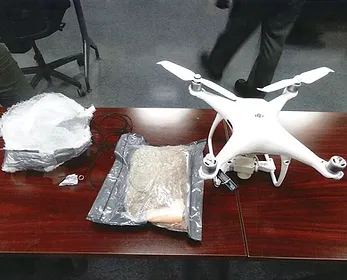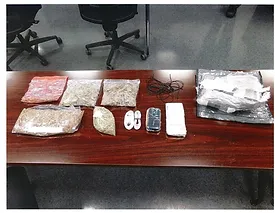 The use of drones poses a significant and evolving threat to the safety and security of correctional institutions in the United States. Criminal networks have increasingly turned to drones as a means of smuggling contraband, including drugs, cell phones, and even weapons, into correctional facilities, presenting unprecedented challenges to traditional security measures.
The use of drones poses a significant and evolving threat to the safety and security of correctional institutions in the United States. Criminal networks have increasingly turned to drones as a means of smuggling contraband, including drugs, cell phones, and even weapons, into correctional facilities, presenting unprecedented challenges to traditional security measures.
A recent report from www.rand.org highlights the growing concern surrounding the infiltration of correctional facilities by drones. Unlike conventional smuggling methods, drones offer a relatively low-risk and highly efficient means of delivering contraband directly to incarcerated individuals. Their ability to swiftly penetrate correctional airspace, coupled with the difficulty in swiftly detecting and intercepting them, has compounded the problem.
The lack of a standardized definition for “drone incidents” hampers efforts to quantify the scope of the issue, hindering comparisons across facilities and systems. This ambiguity underscores the need for cohesive strategies to address the multifaceted challenges posed by drone activity in correctional settings.
The report emphasizes the urgency of adopting a multifaceted approach to counter the drone threat, combining technological innovations, core correctional practices, and strategic partnerships with law enforcement agencies at the state and federal levels. Key findings from a workshop convened to address this issue include:
The absence of standardized terminology and reporting practices for drone incidents.
The rapid evolution of drone technologies, necessitating ongoing assessment and adaptation of detection solutions.
The cost-prohibitive nature of existing drone detection technologies for many correctional agencies.
The need for collaborative efforts to combat highly coordinated drone activities orchestrated by criminal organizations.
The crucial role of basic correctional strategies and human resources in complementing technological solutions.
To effectively mitigate the risks associated with drone activity in correctional facilities, the report offers a series of recommendations:
Development of standardized reporting protocols and terminology for drone incidents.
Creation of vulnerability assessment tools tailored to correctional settings.
Establishment of a centralized database cataloging available detection solutions.
Provision of guidance and resources to assist agencies in grant writing and funding acquisition.
Implementation of operational evaluations to determine the efficacy of layered security approaches.
Enhancement of intelligence-sharing mechanisms to facilitate interdiction and investigation of drone incidents.
 By adopting these recommendations and fostering collaboration among stakeholders, correctional institutions can bolster their defenses against the growing threat posed by drones, safeguarding the integrity of their facilities and the well-being of incarcerated individuals.
By adopting these recommendations and fostering collaboration among stakeholders, correctional institutions can bolster their defenses against the growing threat posed by drones, safeguarding the integrity of their facilities and the well-being of incarcerated individuals.










